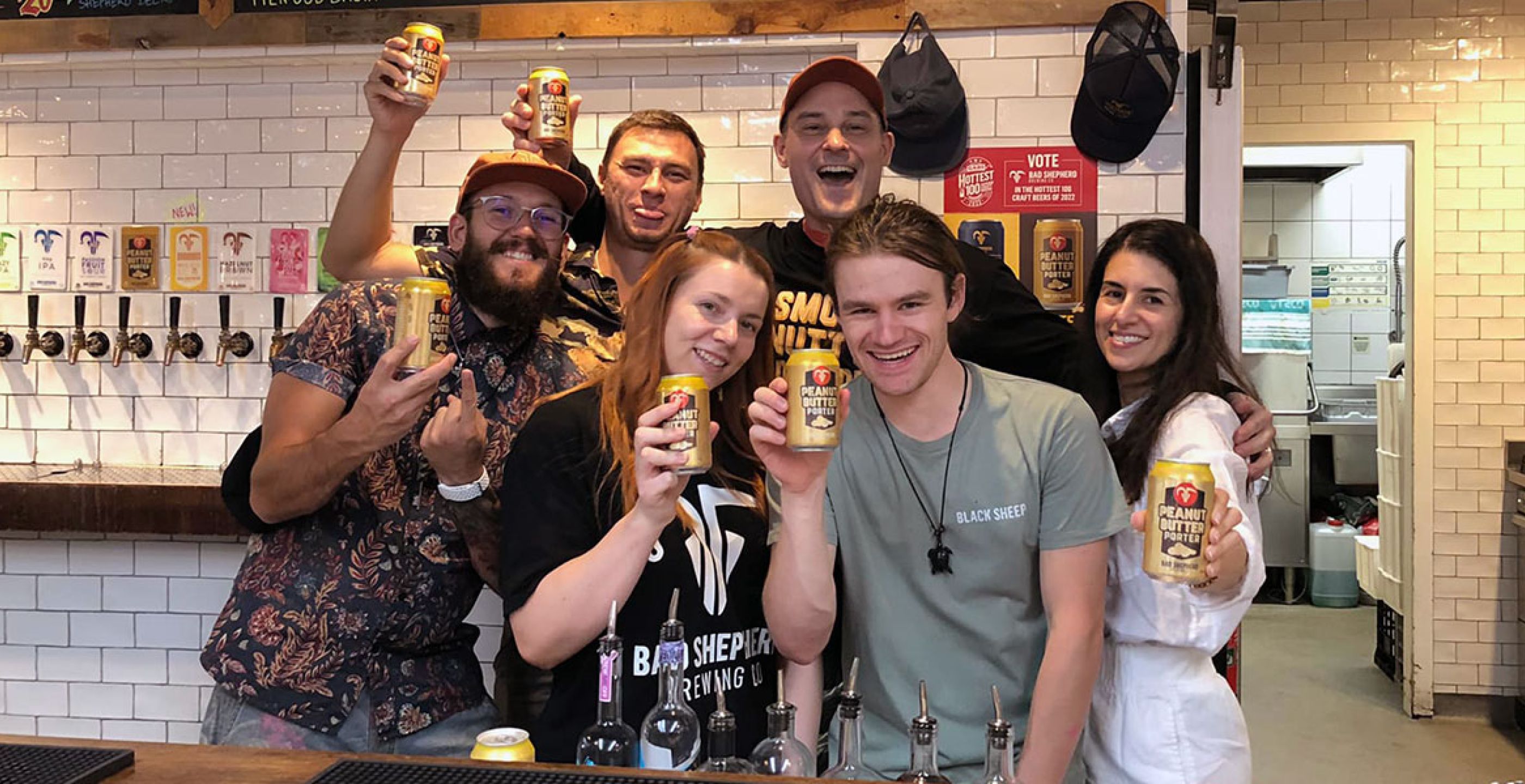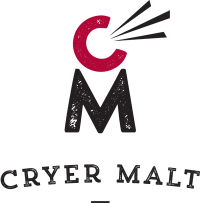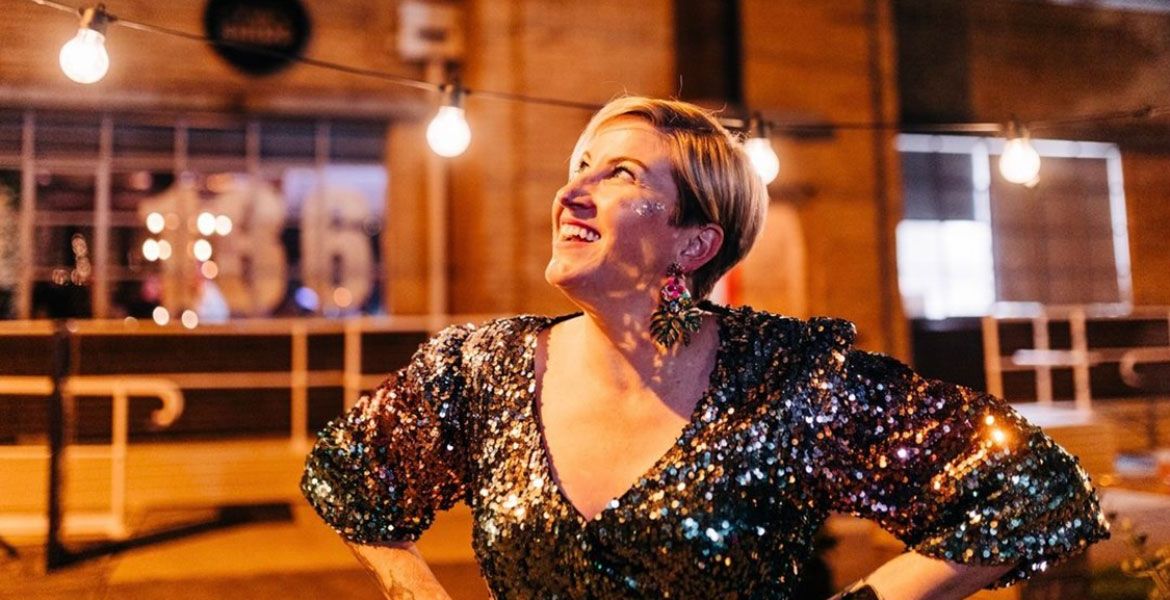A change in the weather is known to be extreme
But what's the sense of changing horses in midstream?
When Bob Dylan sang those words, there’s little chance he was talking about craft breweries – particularly given it was written during the breakdown of his first marriage.
But given the shocks that continue to impact craft breweries – COVID, interest rate hikes, and the rising cost of ingredients to name but a few, and the way such shocks are changing the beer landscape in Australia, now might seem like a pretty good time to change your horse midstream.
Over the past decade or so, we've run a number of articles on the theme of starting a brewery: brewery owners walking readers through their own experiences, others sharing insights on the things they'd do differently, or wish they'd known at the start. Today, while newcomers continue to enter the market, many are feeling the squeeze and wondering what their model should look like to navigate present circumstances.
So, if you're long past starting a brewery but feel the need to evolve as a brewing business, how do you go about it? When your concerns are no longer creating a brand and building a brewery but instead making sure your existing one is relevant and robust enough to survive, what's the answer?
After all, craft breweries have always tended to be fleet-footed and quick to adapt to changes in the market, whether it’s through tweaking recipes, embracing new technology, or going through a rebrand. So we spoke to a few local breweries who've altered course along the way – or are in the process of doing so – to find out.
More Local, More Often
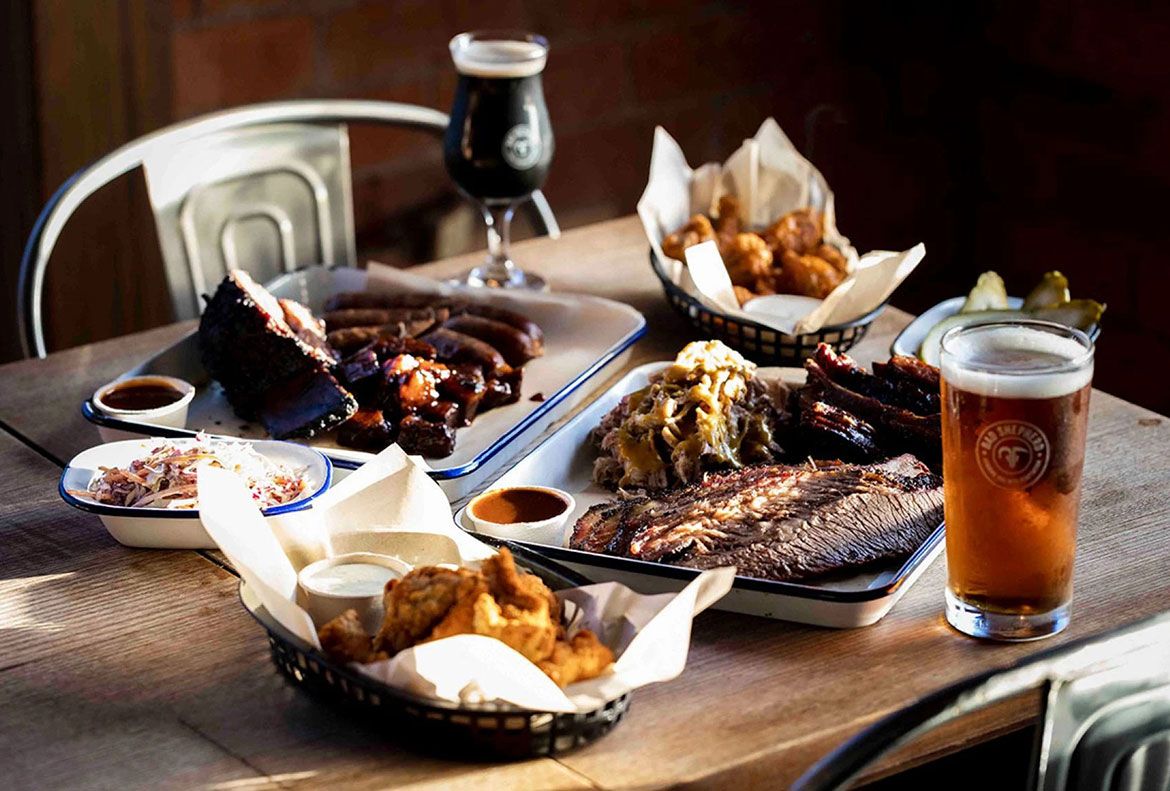
When Bad Shepherd launched in Cheltenham in 2015, their intention was to be a brewpub for their community in Melbourne’s Bayside area. But, while the venue has remained popular – they drew well over 1,000 guests to their South East Beer Fest in May – they quickly found there was demand for their beers outside their locale; soon enough, they made their way into Melbourne bars and bottleshops before heading interstate.
It’s a pretty common story in the local industry: find new customers, expand your capacity to meet increased demand, send that beer to more customers again, repeat. But Dereck Hales (pictured at the top of this story in red cap as they celebrated placing in the GABS Hottest 100), who runs the brewery with wife Diti (on the right of the photo at the top), says the southeastern suburb brewery’s future now looks far more local.
“We’re focusing back on our roots,” he told The Crafty Pint. “We strongly believe that we are one of the lead breweries of the southeast of Melbourne and we want to succeed here first.”
For much of their history, Bad Shepherd have been pulled by growing demand: up until three years ago, they’d often sell out batches of beer before it was even canned. You’d be hard-pressed to find a brewer, or any business owner for that matter, eager to complain about demand for their goods but Dereck says it can present challenges.
“Growing without intention is what happens; it’s like holding a tiger by the tail. You respond to the market," he says, "but now we’re growing with intention.”
Although they still supply to some national customers, they will represent a small portion of the brewery's output going forward. The plan is to embed themselves more in their own community while being careful about taking on any risk in such an uncertain economic environment.
“You need to win where you have a right to win,” he says. “So, we're over-investing our time and effort and resources here and pulling back elsewhere.”
In America, recent data has suggested smaller breweries and taprooms tend to be those enjoying the greatest success currently, and brewery owners have spoken openly about the need to grow down. Dereck sees smaller Australian craft breweries as needing to walk a similar path.
“I think the short-term future of craft beer is going to be about protecting your own backyard, protecting what matters most and what your reasons for being is,” he says.
“While we’re not that small anymore, we want to divert our focus and rebalance our volume to be hyperlocal.”
Although Bad Shepherd’s production capacity means they can make a lot more beer than that pouring through their taps, Dereck admits they can't compete with the country’s biggest breweries, whether they’re multinational or sizeable indies.
“Rather than compete with white label or big breweries,” he says, “I think it's more important to focus on your reason for being, which is for us for a brewpub, and it's about the community around us.”
But what Bad Shepherd can do and some others can’t is build deeper relationships with locals, whether they’re beer drinkers or bar owners, or partnering with local artists, sports clubs, support groups or the local Vietnamese restaurant.
Whether it’s a local restaurant or bowls club, both Bayside businesses in any partnership have a lot to gain from working together: “We’re more recognisable to them, or at least their patrons.
“If we get in there and support something they’re doing, we might not even sell that much beer. But every time people walk in the door, they see Bad Shepherd behind the bar in the fridge and that has its weight in gold.”
At the same time, when you’ve got a sales team – four in the case of Bad Shepherd – success is measured by making sales; as such, changing their direction takes a lot of work. It requires those leading the business to work with the team to change and rethink what success looks like, for example where some sales are slower but more lasting.
“It might feel like it doesn't get you an immediate return but over the long haul, it can,” he says.
“We are changing the mindset of the team and being a lot more flexible about what we do.”
More Experiences, More Locations
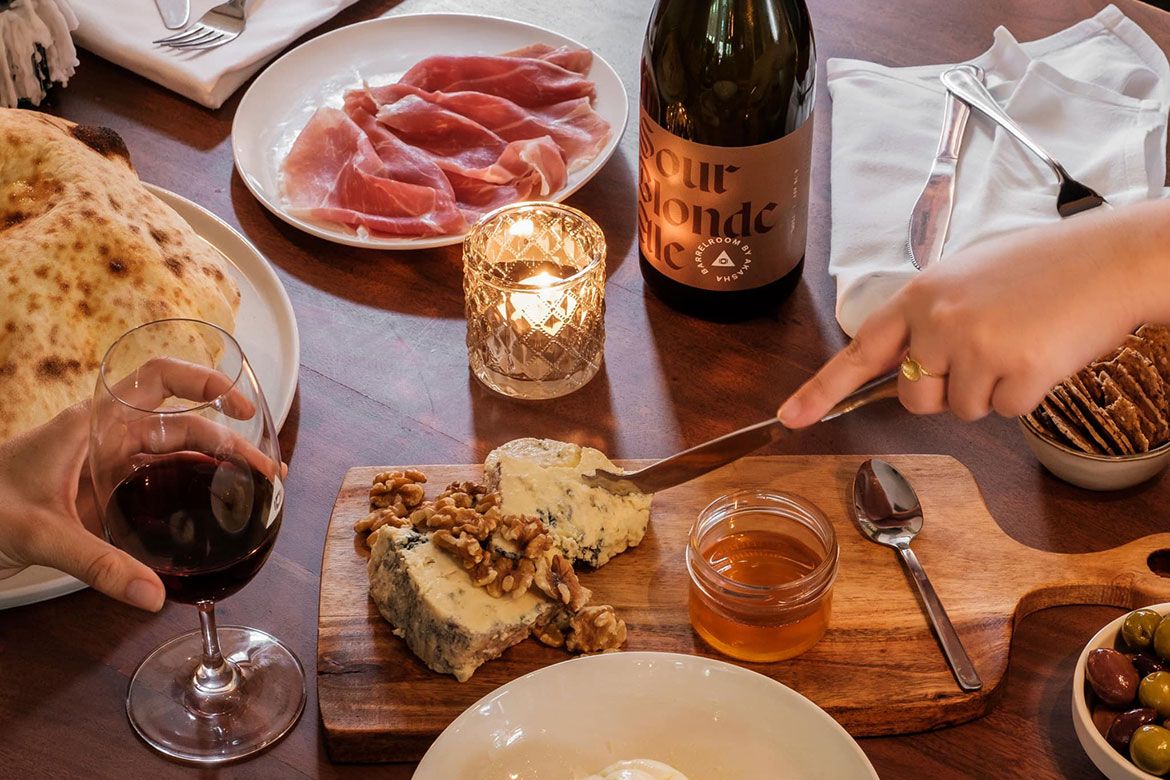
Akasha Brewing launched more than eight years ago and, for all but the last year-and-a-half, their primary focus has been on production. Sure, they have a taproom at their home in Sydney’s inner west but, primarily, their Five Dock home was been designed to produce beer to be sold elsewhere.
“Whilst we had our tap for our local community, it was a wholesale focus for us, and we never really thought too hard about branching into hospitality,” says founder Dave Padden.
Now, however, they’ve switched to a model where the split is more or less: half their sales come from wholesale while the other half comes from hospitality venues they run. Their own spaces include the original taproom, The Barrel Room by Akasha in Leichhardt, and The Edwards in Newcastle. The latter two of those became Akasha’s second and third venue last year following an equity crowdfunding campaign.
Being able to produce and sell beer yourself is certainly a way to capture more profit from each batch, but speaking about the change Dave’s a little more philosophical. Following their rebrand in 2020, the whole team sat down to talk through and review the brewery in an attempt to understand and define what makes Akasha what it is. But before talking about a way to grow the business, Dave says they had to first discuss whether getting bigger was something they wanted.
“One of the first fundamental questions is do you just focus on what you're doing and not grow, or do you label yourself a growth brewery?” Dave says.
“Our motto that we came up with a few years ago was, ‘We love making every everyday experiences remarkable.’
“That’s kind of two days of chatting distilled into one sentence.”
It’s something they’ve always done as a wholesale brewery but, according to Dave, not something they ever had control of beyond a warehouse full of stainless.
“As a wholesale brewery, you insert that beer into somebody's day and into their experience,” he says. “It might be at home, or it could be wherever – and you just hope to make it that little bit better.
“But by launching into hospitality, it kind of gave us the opportunity to create the entire experience, which is quite exciting.”
The trio of venues come with substantial points of difference. The Barrel Room was a chance for Akasha to showcase the barrel program they’d been building for several years without diluting their brand as a brewery largely driven by hops. In the case of The Edwards, it saw them start a home outside of Sydney in a Newcastle venue already known by locals, and which will ultimately have a small brewery – "our innovation centre," says Dave – of its own.
By letting the pub operate as it long had, it also gave the Akasha team the chance to really understand the venue, learn from it, and work through what was great about it as well as what could be improved. Switching towards hospitality with multiple venues can mean bringing different skillsets and the right people into the team to manage the transition. But, in Akasha's case, it's also seen as a means of spreading their risk as a business.
“We’ve had some great growth and still believe there’s a lot of growth in it," Dave says. "But particularly in the last year, wholesale is getting harder and harder.”
These days, beer drinkers also expect more from a brewery visit. And if people have a good time at one of your venues, they’re more likely to spot your cans among the many filling bottleshop fridges.
“The industry has come around a fair bit where people are looking for the experience,” Dave says. “It’s not just the beer, the liquid is just a small part of the whole thing.
“We love and know our product better than anybody, so we can really build a pretty awesome experience around it.”
“We talk about the 500 things that add up to make an experience,” he adds. “The taproom needs to be an experience. It needs to be more than just somewhere you can sit on a crate, have a beer and look at stainless steel. I mean, I think that’s great but not many do, apparently.”
“I think we owe it to our local community to give it a bit more love over the next year.”
Less Is More?

When Zack Skerritt opened Inner North Brewing more than five years ago, his plan was always to create a brewery for Brunswick locals to enjoy.
“We're on the back street off the back street in what's not on the busiest part of Brunswick,” he says. “So, I really hoped the bar would do well, but I didn't know.”
After locking in the site, Zack left plenty of room to grow into.
“The last thing I wanted to do was move into a place and then quickly outgrow it,” he says. “When I was doing my floor plan, my mentality at the time was that I would do a lot more production, maybe not right away, but eventually.
“I was throwing 18 fermenters on a floor plan and I only had two little ones to start out with.”
His thinking was that if the bar took off, they'd be able to fund more production and push beer further away from their Brunswick backstreet. The bar did indeed take off, but by that stage, the plan had changed. He limited his plans for more production, instead just adding four more fermenters without changing the split between production and hospitality.
His thinking? He saw that to grow the production side of the business, he’d have to lose part of his hospitality offering, and it would be harder to run the weddings, birthdays and once-a-season cornhole championships which has helped cement the brewery in Brunswick.
“I realised, I don’t want to, but also, I don’t need to pivot that much,” he says. “There’s a lot less money in it for what’s a decent amount of work.”
Even before the current economic headwinds started bearing down on the local beer industry, there had been plenty of factors eating into the profitability that comes with selling beer into bars or bottleshops, whether that's tap decals or freight. And, as the cost has continued rising, there's been a tendency to get caught up in a whirlwind of trying to grow and thus continuing to invest, and then needing to grow to justify that investment.
“It becomes a circular argument, where you need to sell more beer so you can justify marketing, and you need more marketing to sell more beer,” is how he puts it.
The need to maintain his attention on the bar was driven home by COVID, when lockdowns highlighted how much their venue mattered, both to Inner North’s viability as a business and Brunswick as a whole. Having always wanted to operate a brewery for people who live locally, the long lines out the front when Melbourne came out of its final lockdown drove home that it had been a success.
“When COVID came through, it really clarified that this is where the money comes from,” he says.
“Seeing that queue down the street, really made me realise that I can be that local brewery. I still do some wholesale, but I don’t see the need to be driving out to Ballarat to drop off some kegs.”

If you do spot an Inner North decal or can outside their pocket of Melbourne's inner north, there's a good chance those sales haven’t been driven by him or his team.
“The easiest way to sell beer is to wait for someone to email you asking for it,” he says.
“When you're talking to a bar owner from around the corner as an owner of the brewery, you’ve got a bit of an edge on the sales rep who's worked for four other breweries before.
“You don’t want the business to rely on you 100 percent, but it is a tool in your tool chest.”
Since Inner North welcomed their first customers, more breweries have opened nearby while other Melbourne operations have scaled up their production capacity.
“Part of my thinking with trimming down the brewing area is there's a lot more breweries too. There’s a lot of brewing capacity out there and that brewing capacity has increased a lot more than craft beer sales.
“I knew that in five years’ time, there were going to be a lot more breweries than there were [when I opened]. So, in terms of sustainable growth, you want to keep it close to home.”
And in terms of seeing craft beer as a whole continue to grow – at least when the constraints of the current economic downturn have loosened – he believes it can be driven by small breweries with the ability to connect with locals in a manner similar to Inner North.
“We are education spaces to a degree," he says. "We try to keep it very casual here but our bar staff can explain to someone who’s never drunk beer before what an IPA is, what a stout is, even if they come in just looking for a gin and tonic.
“We sell a product that's got a long history and heritage, and I feel like it's more about trying to find that timeless model. You still innovate and make new beers, but it’s also about continuing to craft the beer that’s been brewed for years and tweaking it.”



